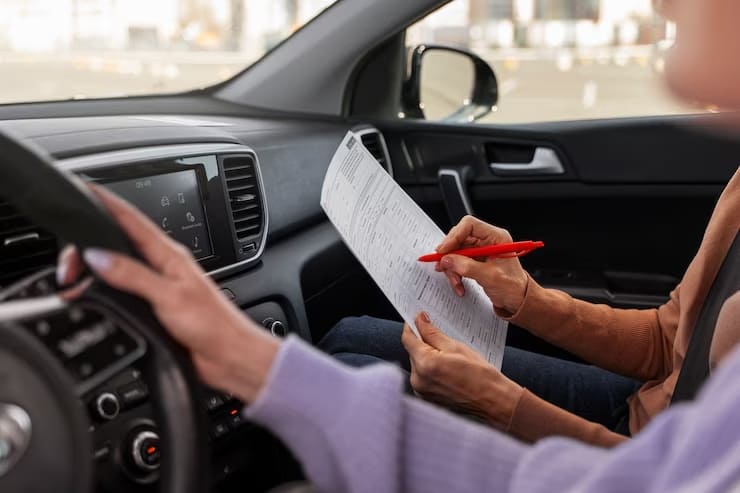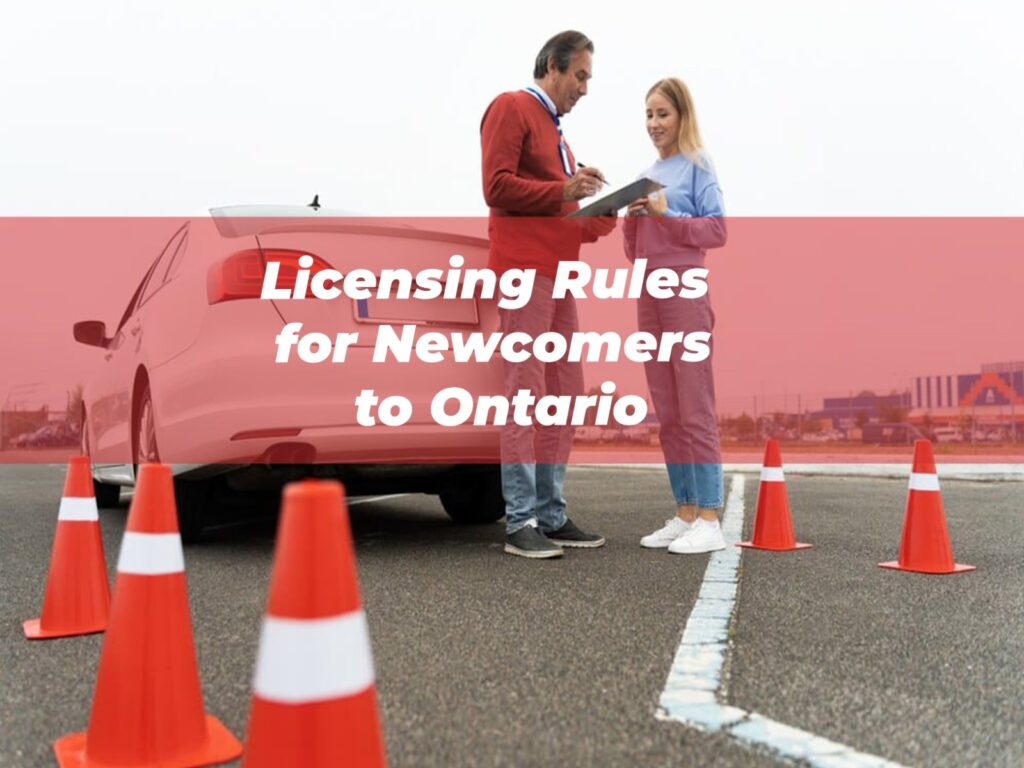Moving to Ontario and navigating the process of obtaining a driver’s license can feel overwhelming, especially if you’re unfamiliar with the rules and requirements. Driving is an essential skill for many newcomers, offering independence and opportunities in this vast province. Whether you’re exchanging a foreign license or starting fresh, understanding the licensing rules is key to hitting the road legally and safely.
This guide breaks down everything you need to know about Ontario’s licensing system as a newcomer. From understanding requirements to exchanging licenses and passing your driving test, we’ve got you covered.
The Process of Obtaining a Driver’s License in Ontario
Ontario has a specific licensing system designed to ensure all drivers acquire the necessary skills and knowledge to drive safely. Here’s how the process works for newcomers:
Step 1: Determine Your Eligibility
To apply for a driver’s license in Ontario, you need to meet the following basic requirements:
- Be 16 years of age or older.
- Provide government-issued identification. If you’re new to Ontario, bring documents proving your identity and residency status, such as a passport, permanent resident card, or landing paper.
- Have legal status to stay in Canada (for example, as a resident, worker, or student).
Step 2: Learn About the Graduated Licensing System
Ontario uses a graduated licensing system, which helps new drivers gradually develop their driving skills and knowledge. The system consists of three stages, which you must progress through in order to earn a full license.
- G1 License: A written test on road rules and traffic signs.
- G2 License: An intermediate license earned after passing a road test.
- Full G License: Granted after completing a second and more advanced road test.
Step 3: Apply for Your G1 License
The first step to getting your license is passing the G1 written test. You’ll complete this test at a DriveTest center in Ontario. It’s a multiple-choice test that covers Ontario’s road rules and traffic signs.
Here’s what you need to bring for your G1 application:
- Government-issued ID (translated, if necessary).
- Documents showing proof of residence in Ontario.
- The applicable fee (around $158.25 for the written test and license package).
After passing the G1 test, you can begin learning to drive with strict rules, including always driving with a fully licensed driver (who has at least four years of driving experience) in the passenger seat.
Licensing Requirements for Newcomers to Ontario
If you already hold a valid driver’s license from another country, you may not need to start from scratch. Ontario recognizes certain foreign licenses and offers an exchange program for eligible drivers.
Exchanging a Foreign License
Countries with License Exchange Agreements
Ontario has license exchange agreements with several countries, including the United States, Australia, the United Kingdom, South Korea, and many in the European Union. If you’re from one of these countries, you can exchange your valid license for an Ontario G license without taking a written or road test.
Here’s how to complete the exchange process:
- Visit a ServiceOntario location or DriveTest center.
- Bring your foreign license, proof of identity, and immigration documents.
- Provide an official letter of authentication, if needed (check if your country’s license requires additional verification).
- Pay the exchange fee.
Once approved, you’ll receive your Ontario license. Please note that your foreign license will not be returned, as it will be sent back to the issuing authority.
Countries Without License Exchange Agreements
If you’re from a country without an exchange agreement, you’ll need to go through Ontario’s graduated licensing system. However, you may use your previous driving experience to shorten the process.
- If you have less than 12 months of prior driving experience, you’ll start at the G1 stage.
- If you have over 12 months of experience and can provide proof (such as an official driving record from your home country), you may skip the G1 stage and attempt the G2 road test directly.

The Graduated Licensing System
The graduated licensing system encourages safe driving practices by gradually increasing driving privileges.
Stage 1: G1 License
The G1 phase is essentially a learner’s permit. With a G1, you can drive only under specific conditions:
- You must be supervised by a fully licensed driver with at least four years of driving experience.
- Zero alcohol or drug consumption while driving.
- Prohibited from driving on 400-series highways or high-speed roads unless supervised by a licensed driving instructor.
You’re required to hold the G1 license for at least 12 months before taking your first road test. However, you can shorten this period to 8 months if you complete an accredited driver education course.
Stage 2: G2 License
After passing the G1 road test, you’ll graduate to the G2 stage. This license opens up more freedom, allowing you to drive without a supervising driver. However, there are still limitations:
- Zero alcohol or drug consumption if under 21 years old.
- Limiting the number of young passengers you can carry at night (for drivers under 19).
The G2 must be held for 12 months before you’re eligible to apply for a full G license.
Stage 3: Full G License
The final stage is obtaining your full G license upon passing the G2 exit test. Once you achieve this, all restrictions are removed, and you’re fully licensed to drive in Ontario.
Tips for Passing the Driving Test
Passing your road test is one of the biggest milestones on the path to earning your Ontario license. Here are useful tips to help you succeed.
Preparing for the G1 Written Test
- Study the Ontario Driver’s Handbook to understand traffic rules, road signs, and safe driving practices.
- Take online mock tests to familiarize yourself with the test format.
- Arrive at the test center early with all the required documents and fees.
Preparing for the G2 Road Test
- Take driving lessons with a licensed instructor to learn proper techniques, like parallel parking and lane changes.
- Practice defensive driving and following the rules of the road, such as yielding and obeying speed limits.
- Make sure the car you use for the test is in good condition, with functioning lights and brakes.
Preparing for the G Road Test
- Review intermediate skills, like merging onto highways and handling busy intersections.
- Practice in different conditions, such as rain or night driving, to feel confident in all situations.
- Avoid test-day jitters by staying calm and focused during your driving exam.
Additional Tips for Newcomers
Get Familiar with Ontario’s Driving Laws
Ontario’s driving laws may differ significantly from those in your home country. Study the rules regarding speed limits, seat belt use, and distracted driving. Fines for traffic violations are often steep, so it’s important to follow the rules carefully.
Consider Driver Education
Enroll in a certified driver education program if you’re new to driving. Not only will this improve your skills, but it may also shorten your G1 waiting period by four months.
Practice with a Co-Driver
If you have a friend or family member with a full G license, ask them to accompany you while you practice outside of lessons. Their guidance can help you gain confidence.
Budget for Driving Expenses
Be aware that obtaining and maintaining a license involves costs, from test fees to insurance premiums. Research car insurance options for newcomers, as it’s a mandatory requirement when driving in Ontario.
Conclusion
For newcomers to Ontario, obtaining a driver’s license can seem daunting at first, but breaking it down step by step makes it manageable. Whether you’re exchanging an existing license or starting from scratch, the graduated licensing system is designed to help you become a safe and skilled driver.
By understanding the licensing rules, preparing for tests, and honing your driving skills, you’ll soon be cruising Ontario’s roads with confidence. Safe travels, and welcome to Ontario!










